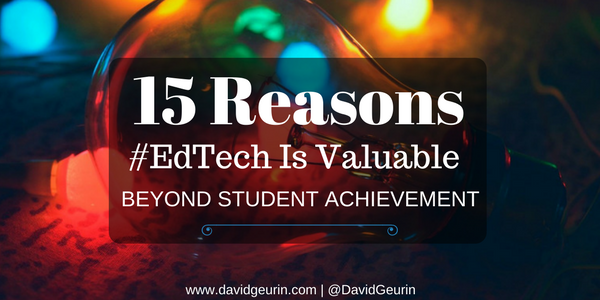We have a group at Bolivar High School known as the SWAT team. SWAT stands for Students Working to Advance Technology. The club started in 2015 to support our 1:1 program that was just getting off the ground.
SWAT provides valuable support related to how we use technology in our school. For instance, they have presented how-to workshops for teachers during our annual PD day, the past two years. And they've been involved in parent open house to demonstrate ways technology is being used for learning in our school. They also help out in the library with issues students are having with their Chromebooks.
Most recently, the group offered tech support for senior citizens in our community every Thursday after school in February from 4-5:00pm. We publicized the opportunity in our local newspaper and on Facebook. It was a simple concept. We had some digital natives (our students) on hand to help the older crowd in our community with anything tech related we could help with.
The senior adults could bring their own device (most of them did) or the students used their Chromebooks to help with Facebook, Gmail, or whatever tool they wanted to learn.
We didn't really know what to expect. It was our first time trying something like this. But it was a huge success. We had customers every single Thursday, and several of our guests came back week after week.
This activity was beneficial on several levels.
1. It was helpful to the senior citizens we served.
Our students helped with Macs, PCs, iPads, Android devices, multiple smart phones, and a Kindle Fire. I don't think there was a single question that our students didn't handle effectively. In one case, it took about 45 minutes to research a solution, but in the end, they resolved the issue.
2. It was a fantastic opportunity to connect with our community.
I think it's great when students can go out into the community or we can bring the community in. In this case, we had quite a few people into our school building that might not normally stop by for a visit.
3. It was a great learning experience for our students.
Our students had the opportunity to give back and lend a helping hand. They got to practice communication skills, empathy, patience, and problem solving. It gave them the opportunity to serve others.
4. Everyone seemed to love it.
Our students enjoyed this experience so much, they asked me if we could keep doing it each week. For a variety of reasons, I made them take a break for the month of March. We'll see after that. But I was proud they wanted to continue. And the senior citizens seemed to have a great time too. Some of them asked me if we could keep doing it, too! Okay, after reading that I feel like a scrooge for making them take a break. :)
Here's a 2 minute video that includes some student voice about how they experienced this project...
Question: Is this something you might try with your students? What questions do you have about this activity? I want to hear from you. Leave a comment below or respond on Facebook or Twitter.










